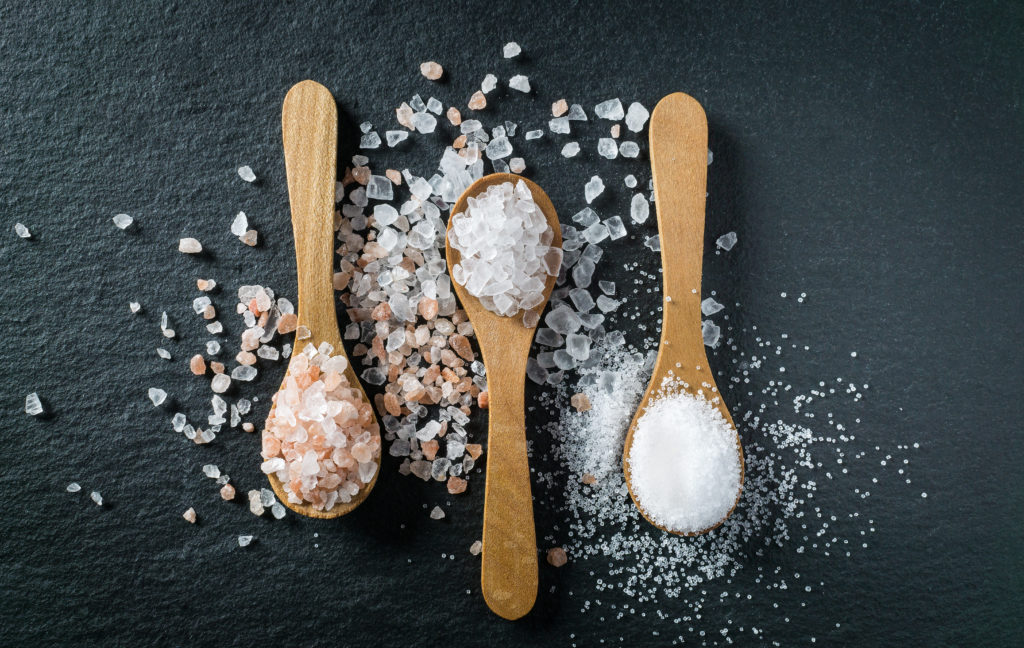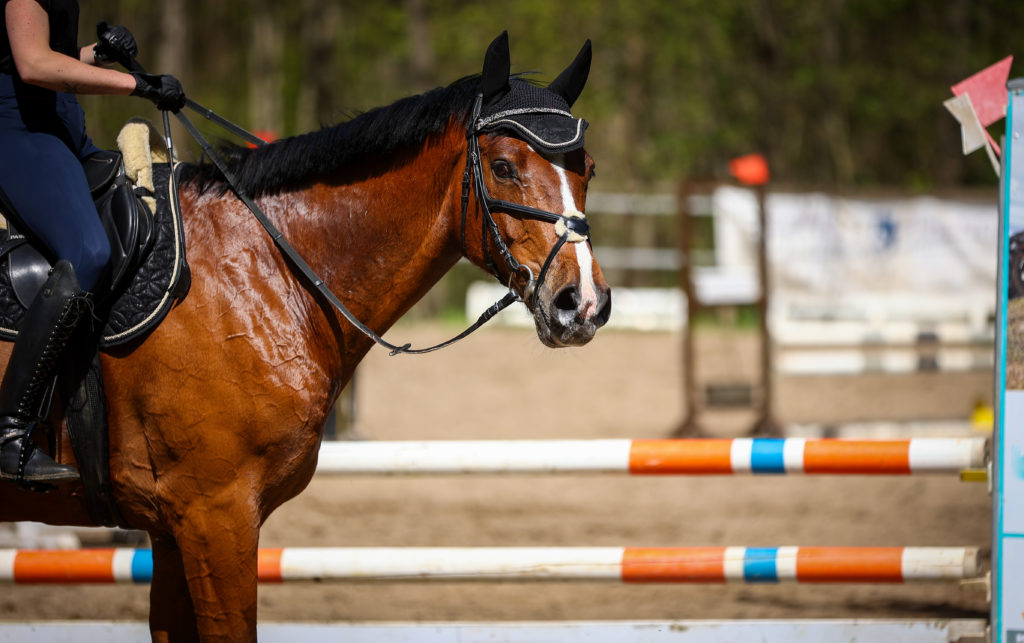Posted: 2nd June 2021 | Back to news feed

Now that we are returning to summer there are many changes, we need to make to ensure our horses continue to function and feel at their best. Although they can regulate their own temperature from a wide range of degrees it is important to note heat can still have a detrimental effect.
It may be difficult to distinguish between actual heat stress and general sweat. It is vital you know the signs coming into summer.
Signs include:
- Body temp of 40 degrees Celsius
- Hot to touch skin
- Excessive sweating and white foam
- Flared nostrils and shallow breathing
- Staggering or ‘drunken’ gait
- Distressed
- Fatigue and collapse in some cases
Horses who are underfed and emaciated will be at higher risk from heat stress due to a lack of glucose and fuel to keep their body strong and working efficiently. The same goes for obese horses, pregnant and older horses. Heavier horses such as draft breeds or ponies originating from cold climates may also feel the heat more due to originating from cooler climates

To prevent heat stress there are a few things we recommend.
- Ensuring your horse has 24/7 access to water, to prevent dehydration.
- If you are lucky enough to be close to water, a dam can be beneficial in higher temperatures, so horses can have access to submerging themselves to cool down. Providing large ice blocks in their water troughs can go a long way to keep the water temperature cool.
- A lot of people worry their horse is not drinking enough water, this is usually never the case unless the horse is sick or suffering from a condition, in which case a vet should be called.
- Simply adding salt to their diet will increase water consumption, but for all the wrong reasons. Adding salt to feed is a common misconception, salt is sodium in one form or another. This can have a negative impact as it can dehydrate the cells rather than replenishing lost nutrients through sweat. If you think about it when we have a salty meal we naturally need to drink more water, this is because the salt dehydrates our cells, the same works for horses. Theoretically you would be causing dehydration rather than treating it.
- Electrolytes on the other hand are wonderful in heat and to replenish minerals lost from sweat. Most electrolyte formulas contain a combination of calcium, phosphorus, sodium, chloride, potassium and magnesium. The key to a good electrolyte supplement is in the ratio of these minerals, it is essential that they are supplied to the correct ratios to ensure optimal absorption and replenishment in the horse. It is essential to keep to the recommended dose of electrolytes, as an excessive amount can have negative effects on the horse.
- Our ElectroPlus formula contains all the minerals at correct dosages for absorption with the addition of selenium and Vitamin C to add to the acid buffering/alkalising effect of the supplement. ElectroPlus acts as a preventative from electrolyte imbalances because it is a buffered acid/alkaline neutraliser, electrolyte and diuretic.
- Other essentials to note would be ensuring the horse has access to shade. Providing a cooler area with cover and good airflow will take a lot of stress off your horses. Everything from tree cover to shade sails or well aerated field shelters in paddocks all offer great solutions.
- Horses who are stabled may be more at risk of heat stress because of the confined space and potentially warmer environment compared to outside temperature. If there is no other option but to have your horse stabled we strongly recommend some kind of air-conditioning or fan system to allow the horse to cool down properly. Taking the horse out of the stable to be hosed down with cool water will also help in this situation ensuring the horse is kept cool throughout the day.
British summers have becoming increasingly hot with rising temperatures and humidity. Higher temperatures and summer can also mean dry soil and dust for some places. Dust can have a negative impact on the horses’ respiratory system.
The main electrolytes are sodium, potassium, calcium, magnesium, chloride and phosphorus. Minor electrolytes are iron, copper, zinc, cobalt, selenium, sulphur and iodine which are required in trace amounts.
One litre of sweat contains approximately 10 gm of salt (8 gms of sodium Chloride and 2 grams of potassium chloride).
ElectroPlus may assist as a preventative from electrolyte imbalances because it is formulated as a buffered acid/alkaline neutraliser, electrolyte and mild diuretic formula. ElectroPlus contains tissue salts some are listed below: each tissue salt has a key role to play, some of these are indicated:

calcium phosphate (cell builder),
calcium sulphate (suppuration remover),
calcium fluoride (tissue strengthener),
potassium phosphate (nerve power activator),
potassium sulphate (cell oxygenator),
potassium chloride (congestion remover),
sodium sulphate (problem fluid remover),
magnesium phosphate (neuromuscular coordinator),
sodium phosphate (metabolic acid remover)
with the inclusion of zinc sulphate (insulin utilisation, sexual maturation, sperm function, RNA production, retina function, white blood cell function, alkaline phosphatase utilisation and liver function).
Hi-Form Electroplus also contains sodium chloride (a major component of the extra cellular fluid and will regulate the acid-base equilibrium. About 95% of the sodium which leaves the body is excreted in the urine).
ElectroPlus also contains the herb Uva Ursi which may assist due to its links to urinary antiseptic action, diuretic action and astringent.
Vitamin C is also used in the ElectroPlus for its enormous benefits. Although horses synthesise Vitamin C they do not synthesise enough and therefore when undergoing enormous stress require high levels. (Research shows this may assist with wound healing, giving tensile strength to connective tissue, helping activate many enzymes, speeding formation of new proteins, detoxifing substances from destroyed cells, helping prevent haemorrhage, increasing urine production) A lack of vitamin C can lead to damage to muscle, capillaries, leucocytes, capillaries, erythrocytes, platelets, calcium content in the blood, liver, pancreas, spleen, adrenals, gastrointestinal tract, genitourinary tract and the endocrine system.
Dr. Schussler’s analysis of the inorganic mineral ash that remains after the human or animal body is burnt revealed that it is primarily made up of twelve mineral salts: and that therefore these minerals must play a vital role in both the physical integrity and proper functioning of the organism as a whole. Further investigation predictably revealed that the different organs and parts of the body were made up of different minerals, and / or different apportionments of those minerals. He therefore concluded that those different minerals and/or different apportionments were vital for both the integrity and functioning of those individual organs and parts.
In 1938, Dr. Maurice Blackmore (1906-1978), an Australian Naturopathic Physician, devised a method that retained the symptomatology of Schussler, but employed small pharmacological doses of mineral substance (ranging from 4mg in the case of calcium fluoride, to 260mg in the case of sodium phosphate).
In 1988 Hi-Form Equine began developing formulas for use in equines using these tissue salts as part of their formulation. Each tissue salt used in Hi-Form’s formulations are used for a specific purpose.
Most commercial electrolyte formulas contain industrial or technical grade minerals/ salts which are very poorly absorbed by the equine. These formulas supply very high levels of these various salts at the expense of the animal.
An outline of the possibilities that can arise as a result of prescribing minerals in large therapeutic doses, or in the wrong form is as follows;
- A deficiency may be temporarily corrected or balanced but not maintained in the longer term.
- A mineral deficiency may be corrected at the expense of a new mineral deficiency.
Performance horses

- Cause of fatigue is a reduction in energy stores of glucose which forces the horse to slow down and use free fatty acids.
- Body strengthening is a vital part of the training program, but the basic problem with body strengthening is the recovery time necessary to achieve biological response and improvement.
- Short training periods with a gradual increase in workload is an excellent guideline.
- Bone responses are increased by training stress such as remodelling and thickening and increased strength. ‘a chain is only as good as its weakest link’
- There are many factors that affect training: external, such as high winds, lightening, heat and internal, such as injury/infection, the horse’s reaction to fight or to flee.
- Extreme stress can cause a series of uncontrolled reactions such as increased heart rate, blood pressure, sweating and perspiration, smooth muscle contraction of the digestive system and increased hormone levels.
- The immune system can be affected by a short period of intense exercise.
- It is important to control the stress levels placed on the horse.
- Physical exercise is external stress and it is essential to increase stress in small amounts so the horse can cope with and adjust to stress levels.
- There is a catch 22 scenario though and that is your horse’s body must under go stress to develop and increase his/her ability to perform. As your horse becomes fitter the range in which you can work safely becomes smaller, this means enough stress to get a training effect and too much which will damage the horse.
As a horse reaches maximum fitness levels it becomes extremely difficult to further improve the horse without damaging him/her. Progressive heart rate testing is a safe reliable method of measuring your horses’ fitness level.
A well-balanced diet, a good daily supplement and an electrolyte such as ElectroPlus is an excellent way to manage high performance horses or horses that tend to sweat profusely.
ElectroPlus is also now available on our website. Please contact us for free advice on balancing your feed ration and preparing for the summer months
Written by Equine Nutritional Therapist and Medical Herbalist Antoinette Foster and Erin Romanin Clinical Nutritionist © 2020
The Equestrian Index newsfeed is compiled from articles submitted by advertising members and expresses the opinions of those members. Watsons Directories Ltd shall not be held liable for any inaccuracies or mis-statements therein.